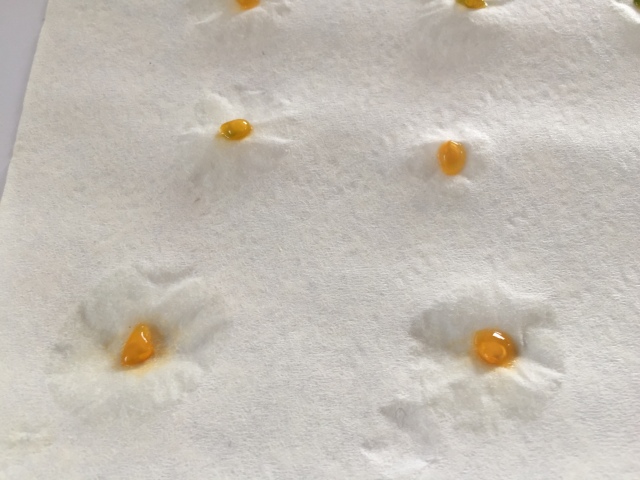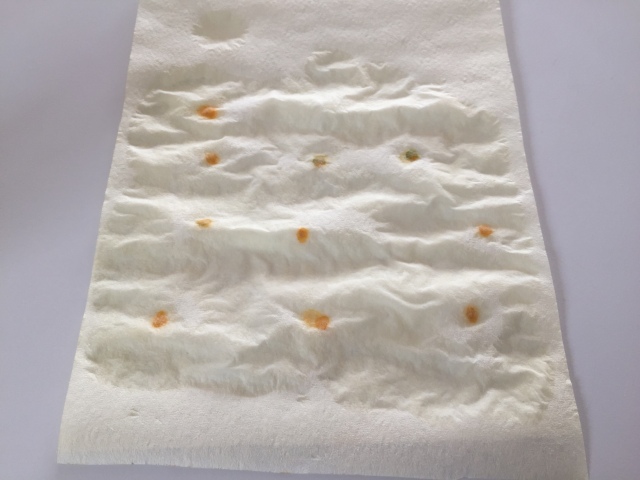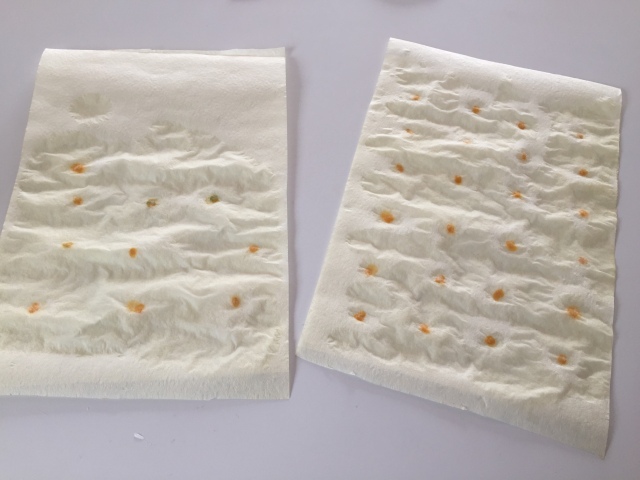Last October, the Royal Tasmanian Botanical Gardens (RTBG) held public sales of tomato plants. One that I acquired was labelled Hurma Ukrainian. It grows high and wide (is an indeterminate tomato) and develops large yellow tomatoes. The eating texture is like no other; it is very smooth and fine to the palate, and feels rich like butter, somehow. Superb. And I want more. So I set out today to collect the seed from one ripe fruit with the hope I can germinate at least one or two plants towards the end of the year.
This site tells me that ‘Hurma means persimmon in Russian’. Further research shows Hurma means persimmon in Ukrainian as well. Makes sense to me. Truly, these have the look of the persimmons I grow at the bottom of my garden. However these tomatoes are larger than my persimmons. And the persimmons tend to be orange coloured whereas my Hurmas are more yellow. Additional information is located here.
So what did I do?
I followed the instructions. Extracted the seeds and placed them in isolation (oh isn’t that the way of everything at the moment!) on a sheet of paper towel.


Then layered another sheet of paper towel over the top to sandwich the seeds.

Wet around each seed to ‘seal’ the two sheets of paper together.


I ensured the sheets were labelled and finally I laid them in a very light warm place to dry.

That is all. Couldn’t be easier. Now I will roll those sheets up and store in a dry dark place for winter. Next they will appear in late September when I will see if I can sprout the seeds indoors, then pot the cotyledons, and finally plant out the seedlings later in October. Fingers crossed it will work!

Didn’t yesterday’s blog say you had to remove the gel-like substance from around the seed before sealing it in paper? Or did I mis-remember?
LikeLike
Yes it did. I squeezed as much ‘gel’ as I could from each seed but didnt want to do more in case I damaged the seed. The proof will be in the germination process. Hopefully I will have lots of plants and give away some – perhaps you would like one?
LikeLike
Well done for the way you have saved your seeds. I do this exact method each year with outstanding success. The experts say to wash the seed gel out using the glass jar, ferment in water, shake and rinse method as this increases your chances of germination next season BUT I never do this as I believe that whilst it makes it harder to germinate next season the ones that do germinate are infinitely stronger. I am guessing that my success rate is around 90-95% so that’s good enough for me. As I only save seed from the biggest, sweetest and best coloured tomato I am assured that I get very strong seedlings. Everyone I give\ sell seedlings to always say that mine are the best and strongest they have ever seen so keep it up and only save seed from the very best tomato you can and it will insure continued success year after year. And yes I would love to have a few seeds. I have got seeds from quite a few European countries, as well as many others, but none from the Ukraine .My heritage tomato seed bank stands at around 160 with many previously unknown in Tasmania. I collect them from our early immigrants, or descendants, who arrive with their seeds in their back pocket and hope in their hearts. Thank god they came to Tasmania to enrich our lives with food, seeds and traditions.
LikeLike
Hi Ross Thanks for this. I live in Hobart – can I assume you do as well so that I can pass a couple of seeds to you at some stage post virus or later this year whichever comes first. As you can imagine there is no guarantee of germination -it is my first experiment and so I will wait with anticipation to see if at least some of the seeds will sprout and then produce sensational fruit. Cheers, Helen
LikeLike